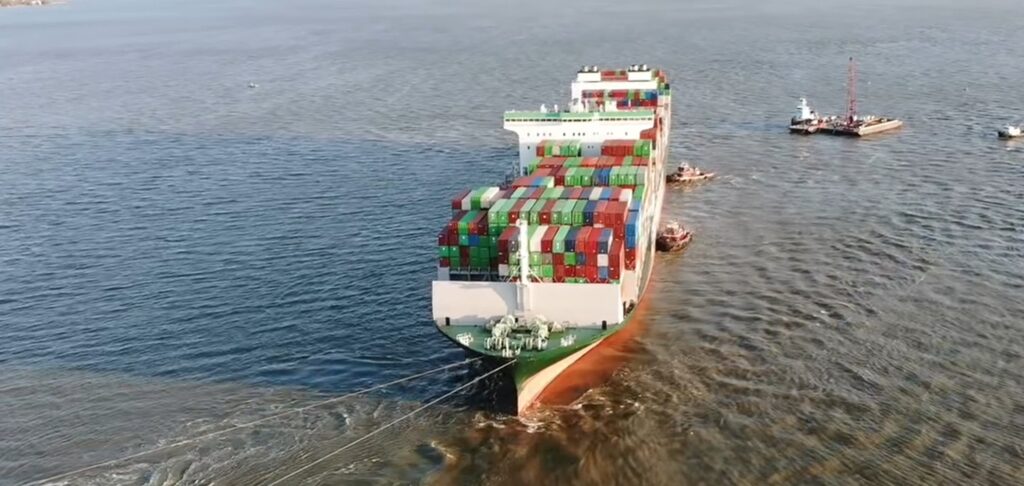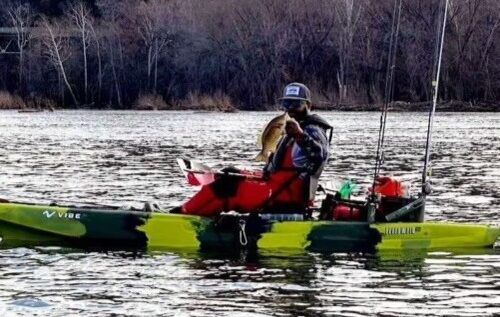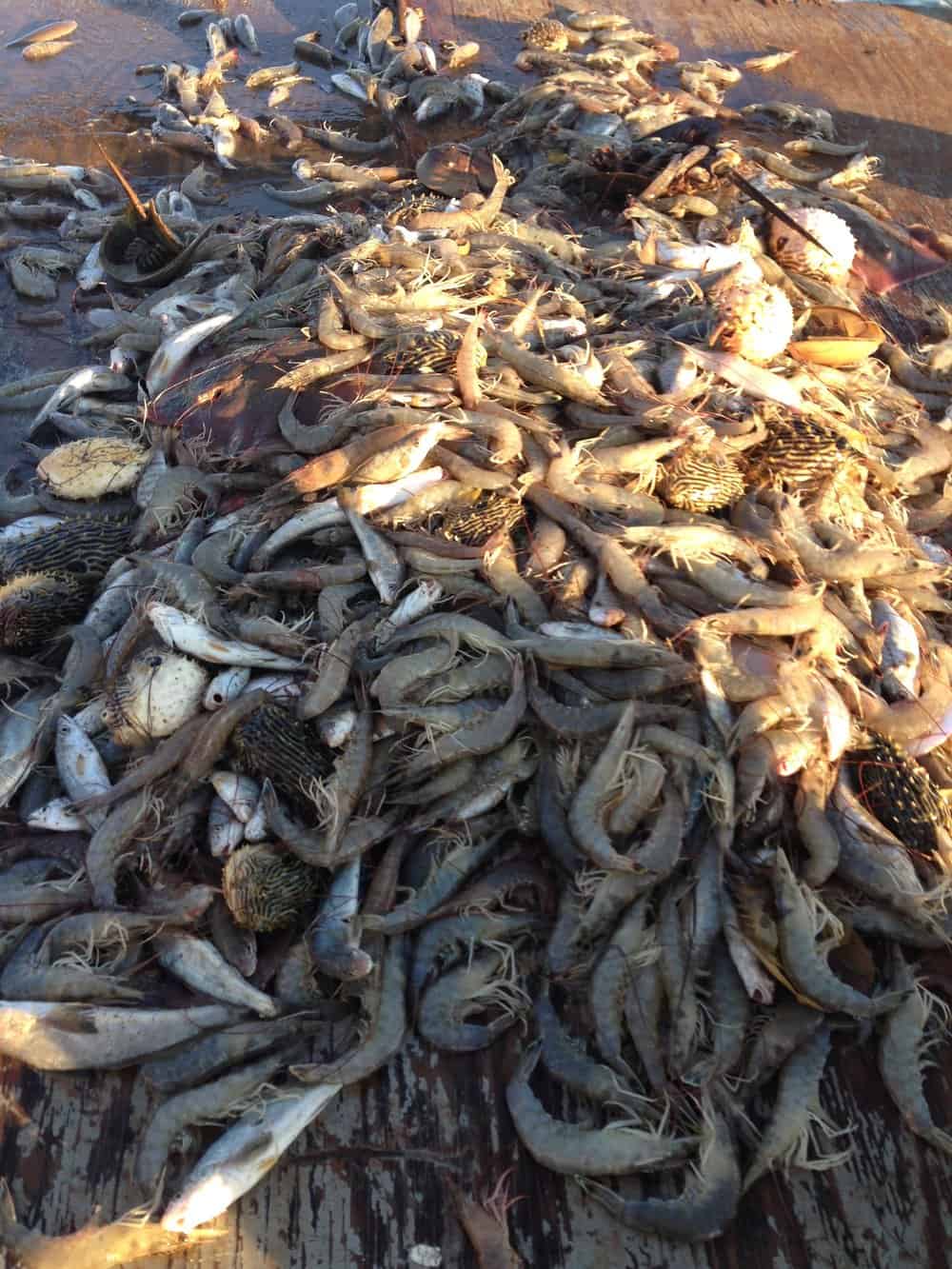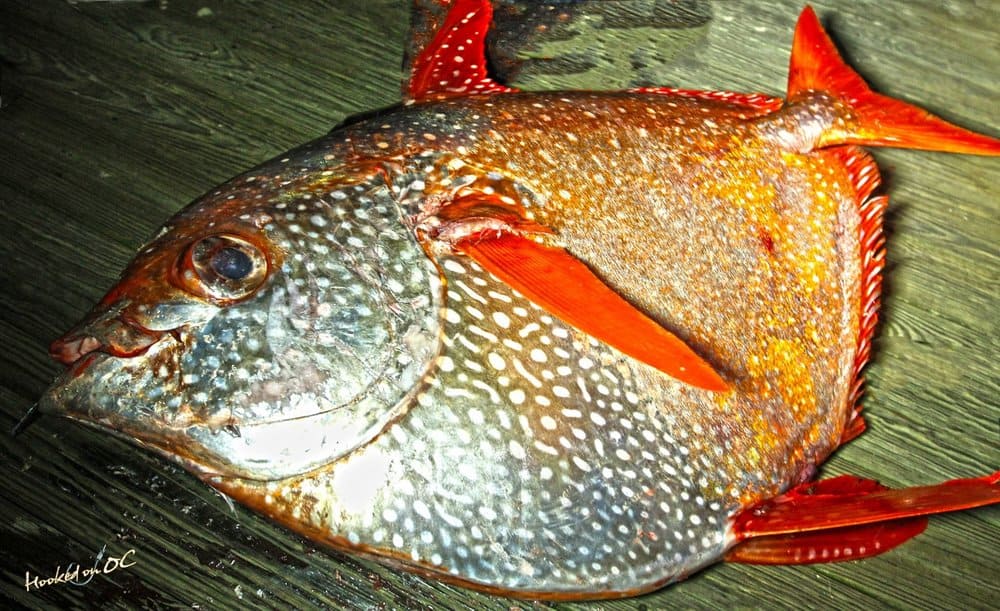The state of Maryland charged Ever Forward‘s owner tens of thousands of dollars for the damage its refloating caused to the Bay bottom (and a nearby oyster sanctuary). Now, the state has announced how it will spend that mitigation money.
The Ever Forward‘s operators had failed to navigate their turn coming out of the Patapsco River to go south towards the Bay Bridge after it left the port of Baltimore laden with containers.
The ship was aground—its hull buried 18 feet deep in the Bay bottom outside the Craighill Channel—for 35 days while barges with cranes tried to dig it out and lighten it by unloading containers. It took three attempts, 15 million pounds of containers removed, six tugs and two barges, and an extra-high tide to finally refloat the 1,095-foot-long ship.
An impact report by the Maryland Department of Natural Resources (DNR) found that the grounding and dredging impacted about 14 acres of Chesapeake Bay bottom, including 11.5 acres within the boundary of a natural oyster bar.
They required Ever Forward‘s owner, Evergreen Marine Corporation to pay more than $676,000 to mitigate the incident’s impact on the Bay. The money was to be used to reseed 41 acres of oyster bar, but not necessarily all in the spot where Ever Forward was aground. The plan was approved in a wetlands license granted by the state Board of Public Works. 60 million oyster spat are to be planted in protected oyster reefs and 87 million will be planted in public oyster reefs where watermen harvest the bivalves. DNR sees this balance as a way to address both the ecological and economic importance of oysters to the Bay.
Now, after a series of meetings with interested parties in Anne Arundel County, DNR has announced the first protected sanctuary location where young oysters will be planted: Herring Bay, in an area listed as “depleted” in the 2022 oyster stock assessment. DNR reasons that the site has plenty of habitat for 12 acres of spat and has adequate water salinity to give the young oysters a fighting chance to survive and reproduce.
“It was unfortunate that the Ever Forward ran aground in the area of a protected oyster bar, but we’re glad to see that remediation from that grounding will go directly to helping oysters in the Bay,” DNR Assistant Secretary for Aquatic Resources Kristen Fidler said. “This new planting of oyster spat will be beneficial to the oyster industry and ongoing restoration efforts in Maryland.”
DNR leaders say they’re working directly with the Advocates for Herring Bay on the 12-acre sanctuary addition.
“The 12 acres in the Herring Bay sanctuary will yield a sizable population of oysters and broodstock,” said Department of Natural Resources Shellfish Division Director Christopher Judy.
DNR and the Anne Arundel County Oyster Committee will determine locations for the 29 acres of public fishery plantings, choices of high interest to local watermen, during DNR’s annual planning meeting with commercial watermen in February.
All the sanctuary and public fishery oyster spay will be seeded in the Bay this summer and into 2025 if needed.




